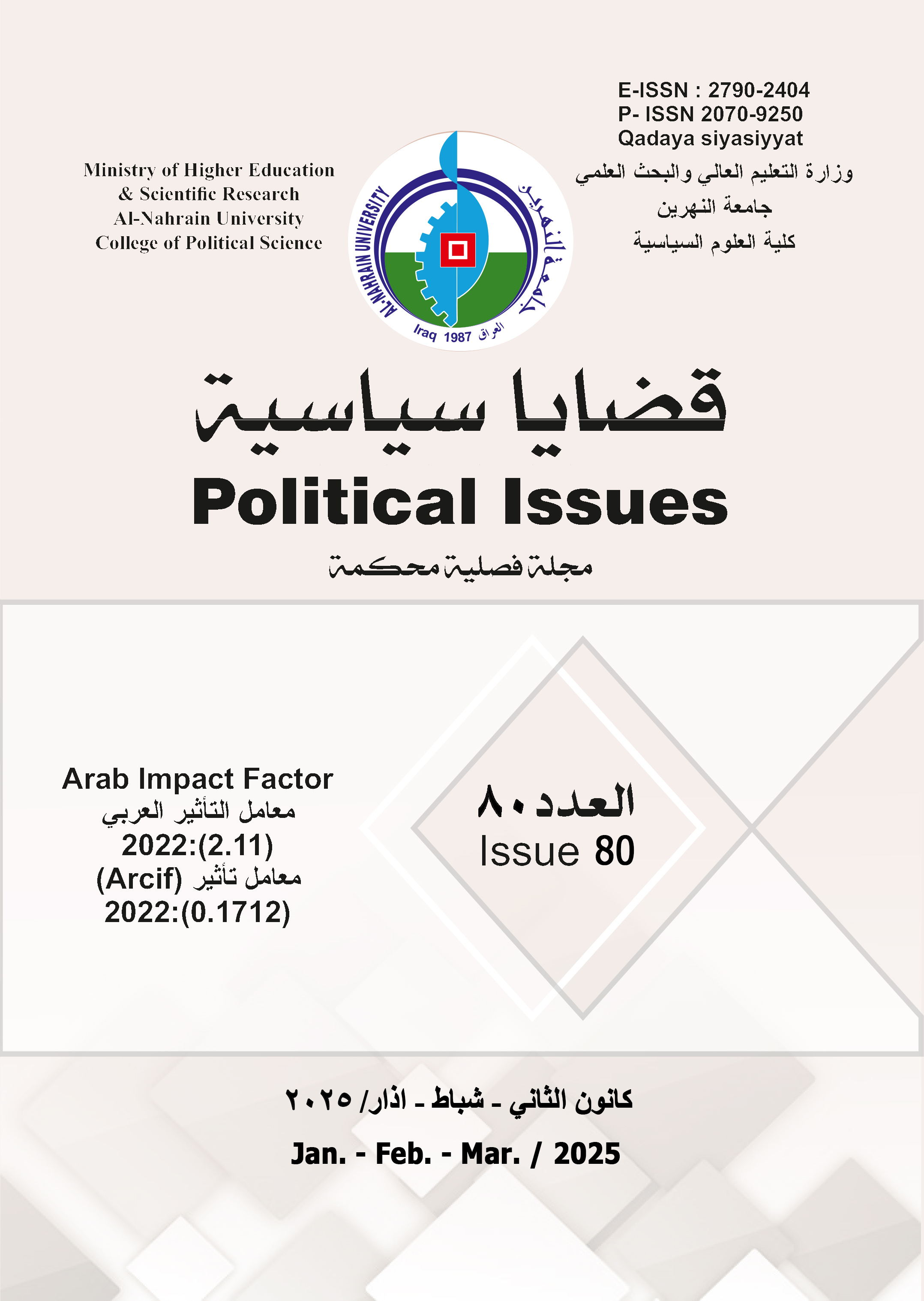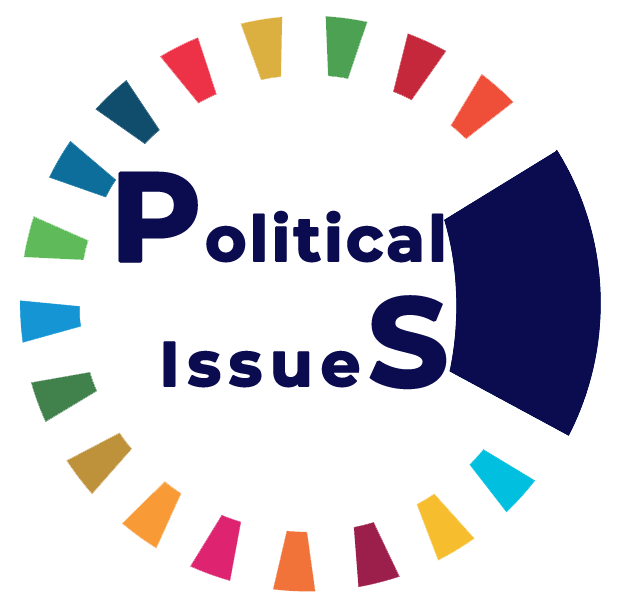The Security Challenges for States in Cyberspace
DOI:
https://doi.org/10.58298/802025672Keywords:
Security, Cybersecurity, CyberspaceAbstract
This study addresses the cybersecurity challenges threatening national security, focusing on cyberattacks and digital wars targeting critical infrastructure. It highlights international efforts, including global cooperation and legislative advancements, to mitigate these risks. The research emphasizes the importance of policy development and balancing security with digital rights protection. Recommendations include investing in infrastructure, human resource training, and fostering international collaboration to counter growing cyber threats.
References
Tagreed Moein Hassan, The Military Impact of Cybersecurity on the Political Geography of the State, Journal of Geographical Research, Issue (30), (Iraq: 2019), p. 240.
Mona Abdullah Al-Samhan, Requirements for Achieving Cybersecurity for Administrative Information Systems at King Saud University, Journal of the College of Education, Mansoura University, Issue (111), (Egypt: 2022), p. 9.
Sally Saad Muhammad, Cybersecurity and the Role of Universities in Promoting It among Students, Hammurabi Center for Research and Strategic Studies, (Iraq: 2022), p. 2.
Salim Dahmani, The Impact of Cyber Threats on National Security: The United States as a Model (2001-2007), Master's Thesis submitted to the Faculty of Law and Political Science, Mohamed Boudiaf University, M'sila, Algeria, 2018, pp. 32-33.
Mayar Adel Fathi - Taqi Hamid Moawad, The Role of the Russian Political Leadership in Promoting Cybersecurity (2012-2023), (Germany: Arab Democratic Center, 2023), at https://democraticac.de/?p=90695.
Mahmoud Muharab, Israel and Cyberwarfare: A Reading of the Book "War in Cyberspace: Trends and Impacts on Israel," a book review series published by the Arab Center for Research and Policy Studies, 2011, p. 1.
Hamdoun Touré, Cyberspace and the Threat of Cyberwar: The Search for Cyber Peace, International Telecommunication Union, January 2011, pp. 9-12.
Belfred Lotfi Amin, Cyberspace: Engineering and Actors, Algerian Journal of Political Studies, June 5, 2016, pp. 145-155.
Pascal Yunivas, Geopolitics: A Comparison to Understand the World in 48 Articles, translated by Ayad Issa, Syrian General Book Authority Publications, Syria, 2010, p. 81.
Joseph Hetron et al., War and Strategy: Approaches and Concepts, Vol. 2, translated by Ayman Mounir, National Council for Culture and Arts, Kuwait, 2019, p. 71.
Muhammad Saeed Al-Amri, Adel Abdullah Hamid, Muhammad Al-Amin Al-Bishri, Cybersecurity and Digital Investigations, Abu Dhabi: United Printing and Publishing, 2021, pp. 23-23.
Mustafa Ibrahim Salman Al-Shammari, Cybersecurity and Its Impact on Iraqi National Security, Journal of Legal and Political Sciences, Volume (10), Issue (1), College of Law and Political Science, University of Diyala, 2021, p. 156.
Ihab Khalifa, The Growing Cyber Threats to Military Institutions, Events Trends Journal, Issue (22), 2017, p. 56.
Salah Mahdi Hadi Al-Shammari and Zaid Muhammad Ali Ismail, Cybersecurity as a New Pillar of Iraqi Strategy, Political Issues Journal, Twelfth Year, Issue 62, (Baghdad: Al-Nahrain University, College of Political Science, 2020), pp. 278-281.
Hamdoun I. Touré et al., Research on Cyber Peace, International Telecommunication Union, Geneva, 2011, p. 7.
It is advanced malware used in targeted cyber attacks. It is believed to have been developed by specialized entities to launch espionage or sabotage attacks against sensitive targets such as government institutions or large corporations.
Hussein Bassem Abdul Amir, Cybersecurity Challenges, Center for Strategic Studies, University of Karbala, International Information Network (Internet), at the link: http://kerbalacss.uokerbala.edu.iq/wp/blog/2018/05/17/%DD9%8A/
Yasmine Balasal Bint Nabi and Al-Hussein Amroush, Electronic Threats and Cybersecurity in the Arab World, Numerus Academic Journal, Issue (2), 2021, p. 171.
Marwan Salem Al-Ali, "Strategic Challenges to Iraqi National Security in Light of International Changes," Tikrit Journal of Political Science, Issue 20, (Tikrit: Tikrit University, College of Political Science, 2020), pp. 58-61.
Karar Abbas Mutab, "Cyberwar: A Study of the Strategy of Cyberattacks between the United States and Iran," Hammurabi Journal of Studies, Issue (40), Hammurabi Center for Studies, 2021, p. 198.
Ihab Khalifa, "The Rise of Cyber Threats to Military Institutions," op. cit., p. 57.
Ihab Khalifa, "Post-Information Society: The Impact of the Fourth Industrial Revolution on National Security," Al-Arabi for Publishing and Distribution, Cairo, 2019, p. 114.
Murad Mashwash, "International Efforts to Combat Cybercrime," Al-Wahat Journal for Research and Studies, Issue 2, 2019, available online at: https://www.asjp.cerist.dz/en/PresentationRevue
Abbas Badran, "Cyber Warfare: Engagement in a Changing World," 1st ed. (Beirut: Center for Arab Unity Studies, 2010), pp. 27 ff.
Ahmed Abdel Karim Abdel Wahab and Mahmoud Abdel Rahman Khalaf, "The Problem of Iraqi Cybersecurity Between Cyber Threats and Restrictive Regulation of Freedoms," Political Issues Journal, 12th Year, Issue 60, (Baghdad: Al-Nahrain University, College of Political Science, 2020), p. 142.
United Nations, UN General Assembly adopts historic convention to combat cybercrime, Internet, accessed on January 2, 2025, available at: https://www.unodc.org
The official website of the International Criminal Police Organization (INTERPOL), Cooperation Services in Combating Cybercrime, Internet, available at: https://www.interpol.int/ar/4/6/6
Heba Gamal El-Din, Cybersecurity and the Transformation of the International System, Journal of the Faculty of Economics and Political Science, Issue (94), Cairo University, 2023, p. 199.
Muhammad Akram Mohsen, The Cyber Threat to Regional Security in the Twenty-First Century: Israel as a Model (unpublished master's thesis, Mosul: University of Mosul, College of Political Science, 2022), pp. 197-202.
Ihab Khalifa, The Growing Cyber Threats to Military Institutions, previously cited source, p. 100.
Additional Files
Published
Issue
Section
License
Copyright (c) 2025 سيناء علي محمود

This work is licensed under a Creative Commons Attribution 4.0 International License.
This is an Open Access article distributed under the terms of the creative commons attribution (CC BY) 4.0 international license which permits unrestricted use, distribution, and reproduction in any medium or format, and to alter, transform, or build upon the material, including for commercial use, providing the original author is credited.






